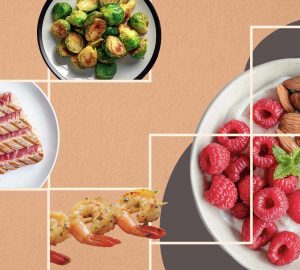Intermittent fasting has been getting a lot of attention in the health and fitness scene these past few years, but it may come as a surprise to most people that humans have been intermittent fasting since before civilization started. As the world progresses and we have a steady supply of food (and often too much food), intermittent fasting just doesn’t seem like it would fit into our daily lives.
However, a lot of research has highlighted the positive results on one’s health. According to PerfectKeto’s guide, it may be the key to helping you achieve your fitness goals, especially if you’re not into fad diets.
Flexibility is Key
Most people give up on diets because they’re too restrictive on not only calories, but sometimes on specific macronutrients as well. Many diets require cutting out fats, or swapping fatty foods for low-fat substitutes. This poses a huge inconvenience for many people.
With intermittent fasting, it’s not a matter of what to eat, but when to eat. This is a lot more appealing to the average person, considering we do skip meals occasionally and still manage to go through the day.
Depending on your schedule, you can fast during the day and have a huge meal at night, or fast twice a week. There are several ways to do intermittent fasting, and as long as you can stick to it, you’ll achieve your fitness goals!
No Sugar Cravings = Keeping Yourself on Track
It’s common for those undergoing strict diets to go through the “yo-yo” effect, a period where cyclical weight gain and loss happens. This can be really demotivating, and ultimately, many give up. When your body lacks sugar, you’re bound to crave for it, to the point you give in to your diet and pig out for a day.
When you’re intermittent fasting, cravings come by but they are easily overcome, because you’re bound to receive your daily dose of sugar soon. This study showed that restricting calories, even for 24 hours, doesn’t cause your appetite hormones to be released.
Burn Fat, Preserve Lean Muscle
Many bodybuilders opt for intermittent fasting, especially when they are cutting because intermittent fasting preserves most of your lean muscle while burning a lot of fat.
A study in The American Journal of Clinical Nutrition found that there was a reduction of fat mass in subjects undergoing a 1 meal/day diet, while maintaining their caloric needs for weight maintenance.
In short, you can eat as much as you usually would to maintain your weight, at the same time burn those stubborn fat off! Long term, you’ll be able to adhere to this fasting routine as you don’t have to make any tough changes to your diet, and still see noticeable differences.
Better Endurance
Fitness isn’t just about looking good, but being efficient when doing strenuous exercises as well. As your body is more efficient in using oxygen, your work output would improve drastically.
VO2 max is the optimum rate your heart, lungs, and muscles can use oxygen effectively during exercise and is used as a measurement for your aerobic capacity. An endurance athlete would typically have a higher VO2 max than John who’s rocking the beer belly.
Intermittent fasting can improve your VO2 max significantly, even if you aren’t a seasoned athlete. A study was conducted on two groups, one who fasted, and the other had cereal for breakfast. After going on the bicycle, it was concluded that the fasting group had a 9.7% increase in VO2 max, as compared to the other group’s measly 2.5%.
Take-Home Message
I personally think the reasons I listed alone should convince anyone to give intermittent fasting a try! Remember, achieving your fitness goal is a lifestyle choice, and you must choose a diet or method that you can stick with.
If not, you’ll only be wasting your time, and as someone who has done that, I wish I had known about intermittent fasting sooner!








